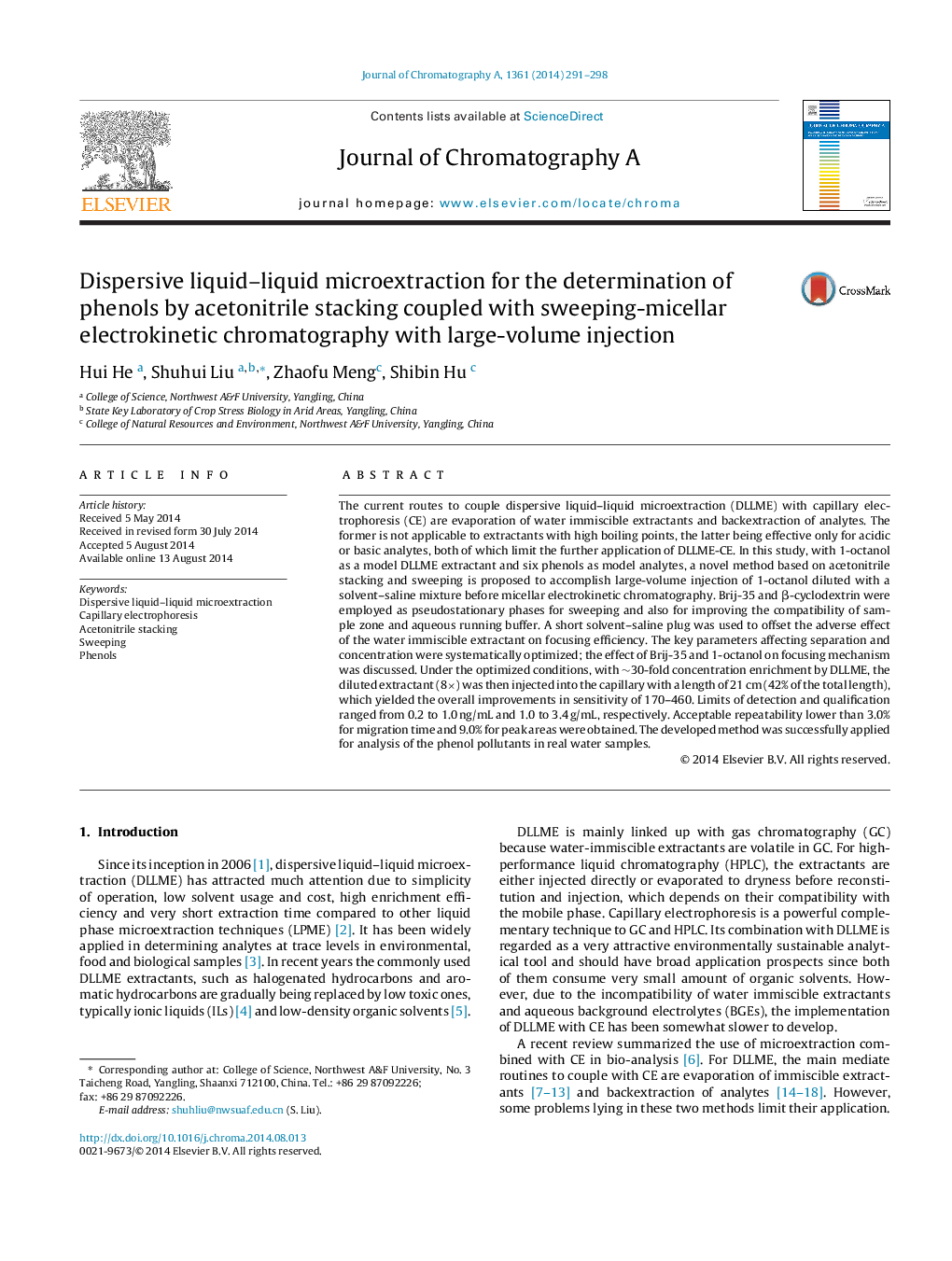| کد مقاله | کد نشریه | سال انتشار | مقاله انگلیسی | نسخه تمام متن |
|---|---|---|---|---|
| 1199310 | 1493565 | 2014 | 8 صفحه PDF | دانلود رایگان |
• Large-volume injection of the diluted extractant was achieved for analysis of phenols.
• Acetonitrile stacking and sweeping mainly contributed to low LODs (0.2–1.0 ng/mL).
• Insertion of a solvent–saline plug offsets the adverse effect of 1-octanol on stacking.
• Use of Brij-35 and β-CD improved the compatibility of extractant and aqueous buffer.
• This method presented a universal approach to combine DLLME with CE.
The current routes to couple dispersive liquid–liquid microextraction (DLLME) with capillary electrophoresis (CE) are evaporation of water immiscible extractants and backextraction of analytes. The former is not applicable to extractants with high boiling points, the latter being effective only for acidic or basic analytes, both of which limit the further application of DLLME-CE. In this study, with 1-octanol as a model DLLME extractant and six phenols as model analytes, a novel method based on acetonitrile stacking and sweeping is proposed to accomplish large-volume injection of 1-octanol diluted with a solvent–saline mixture before micellar electrokinetic chromatography. Brij-35 and β-cyclodextrin were employed as pseudostationary phases for sweeping and also for improving the compatibility of sample zone and aqueous running buffer. A short solvent–saline plug was used to offset the adverse effect of the water immiscible extractant on focusing efficiency. The key parameters affecting separation and concentration were systematically optimized; the effect of Brij-35 and 1-octanol on focusing mechanism was discussed. Under the optimized conditions, with ∼30-fold concentration enrichment by DLLME, the diluted extractant (8×) was then injected into the capillary with a length of 21 cm (42% of the total length), which yielded the overall improvements in sensitivity of 170–460. Limits of detection and qualification ranged from 0.2 to 1.0 ng/mL and 1.0 to 3.4 g/mL, respectively. Acceptable repeatability lower than 3.0% for migration time and 9.0% for peak areas were obtained. The developed method was successfully applied for analysis of the phenol pollutants in real water samples.
Journal: Journal of Chromatography A - Volume 1361, 26 September 2014, Pages 291–298
